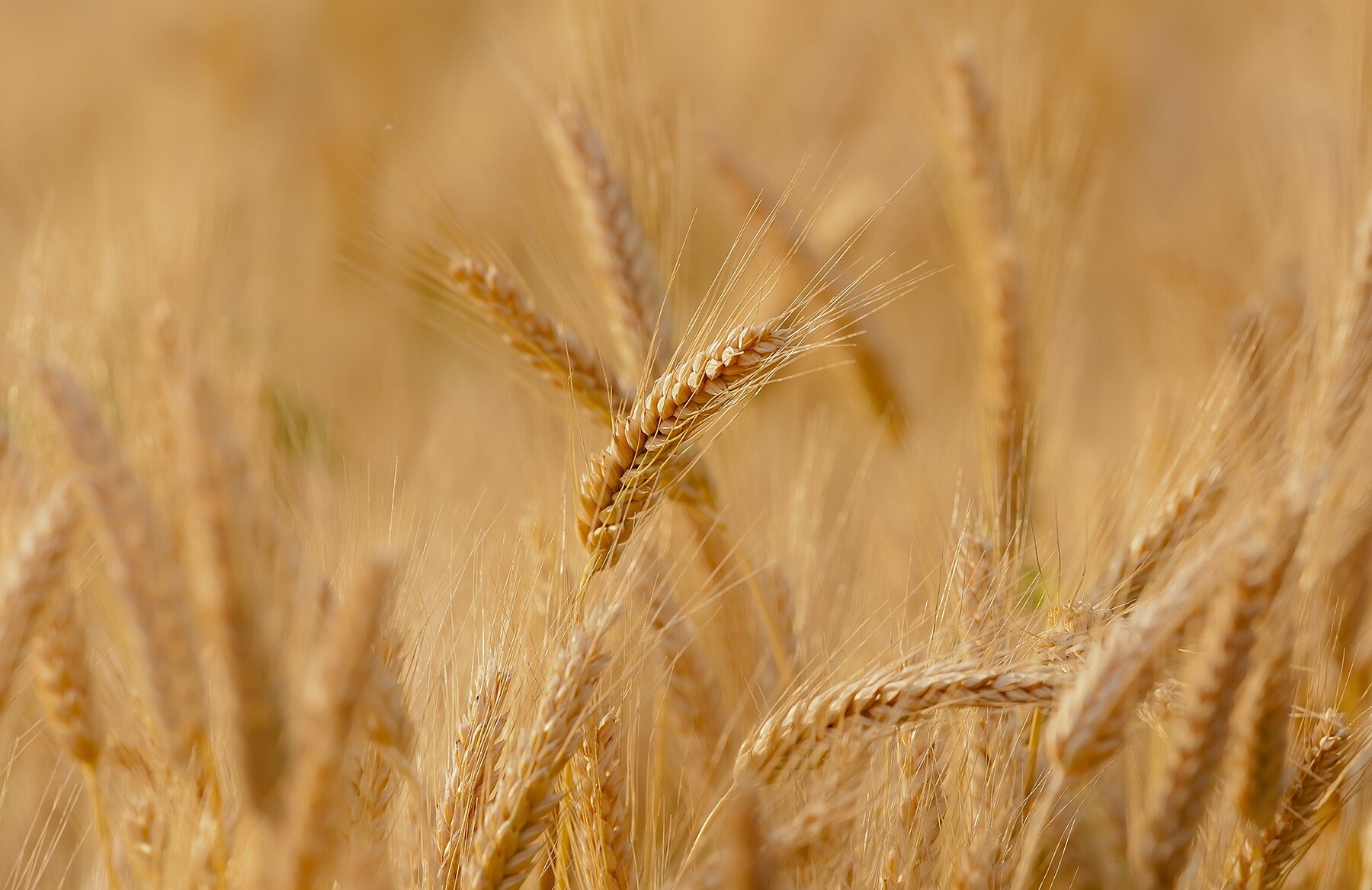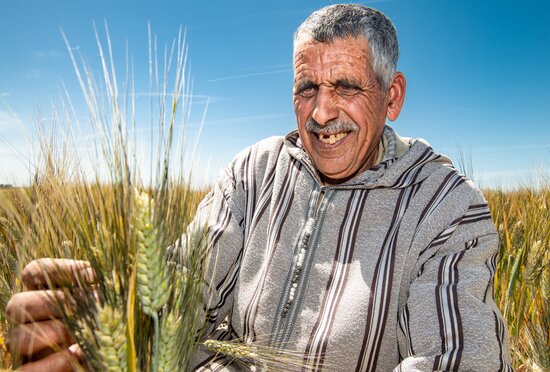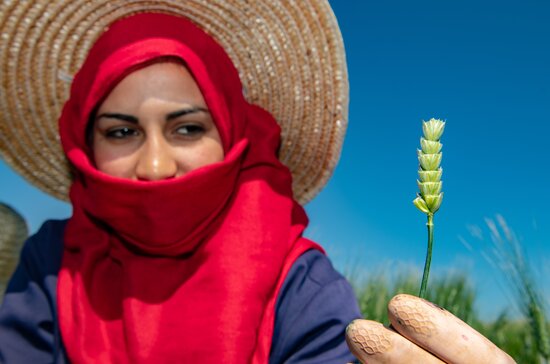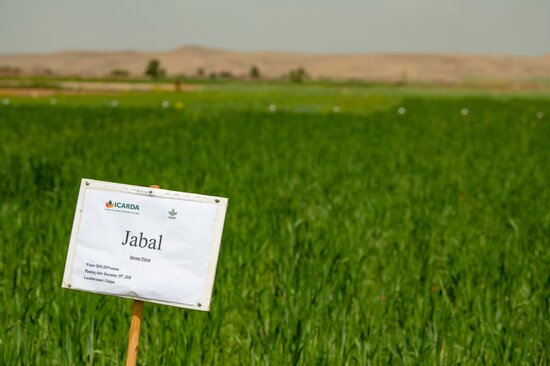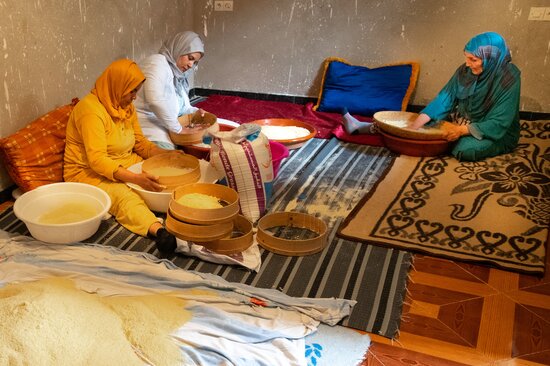Durum Wheat
The BOLD Durum Wheat Project
The aim of the BOLD Durum Wheat Project is to increase the genetic diversity of durum wheat available to plant breeders and farmers. This will contribute to improving food security, resilience and livelihoods of wheat farmers in areas severely affected by biotic and abiotic stresses due to climate change.
Why durum wheat?
Durum wheat [Triticum turgidum subsp. durum (Desf.) Husn.] plays a vital role in providing food security and nutrition for millions of people worldwide. It provides energy, essential nutrients and dietary diversity across the Near East and North Africa, Europe, North America and parts of Asia. Durum wheat is the sixth most produced cereal (about 35 million tonnes in 2021).
Durum wheat is an ancient crop that accompanied humanity since its initial settlements and as such it is the raw material for a vast range of traditional foods, such as pasta, couscous, bulgur, dalia, unleavened breads — including pizza crust — freekeh and baklava. It contains higher levels of protein, minerals (especially selenium), vitamins, especially vitamin B-complex and vitamin E, and carotenoid pigments (antioxidants and anticancer properties) than bread wheat. It also has a very low glycemic index, making it a good source of energy for diabetics. It is generally considered more drought and heat tolerant than bread wheat. Despite its ancient origin, this crop has a relatively narrow genetic base and would benefit greatly from broader diversity.
Challenges
Climate change poses severe challenges for durum wheat, with higher temperatures, more frequent and deeper droughts and changes in occurrence and incidence of pests and diseases, especially in the Mediterranean region and sub-Saharan Africa. Key diseases include leaf rust and yellow rust, septoria leaf blotch, Fusarium head blight — also known as scab — and Fusarium culmorum, one the most common causes of root rot in wheat in North Africa. Hessian fly is also emerging as an increasingly important insect pest, causing extensive damage to cereal production in North Africa, West Asia and Central Asia.
Plant breeders must also respond to the demand for higher yields and improved nutritional and processing qualities.
Building on the Crop Wild Relatives Project
The BOLD durum wheat work builds on work conducted under the Crop Trust's Crop Wild Relatives (CWR) Project, “Adapting Agriculture to Climate Change: Collecting, Protecting and Preparing Crop Wild Relatives.” This successfully demonstrated the efficacy of using CWR to enhance stress tolerance in durum wheat in challenging rural areas of Ethiopia, Lebanon, Morocco and Senegal. This led to the release of several durum wheat varieties derived from CWR, including Jabal and Nachit in Morocco, Zagharin2 in Lebanon and two varieties in Senegal for commercial use across West Africa.
Project partners
- The International Center for Agricultural Research in the Dry Areas (lead)
- Agricultural Research Corporation, Sudan
- Ethiopian Institute of Agricultural Research, Ethiopia
- Institut National de la Recherche Agronomique, Morocco
- Institut National de la Recherche Agronomique de Tunisie, Tunisia
- Institut Sénégalais de Recherches Agricoles (ISRA), Senegal
- Lake Chad Research Institute, Nigeria
Activities
- Evaluate CWR-derived lines from the CWR Project in breeding pipelines
- Develop new varieties based on elite CWR-derived lines from the CWR Project
- Conduct participatory evaluation of new diversity at farmers’ fields
- Collect and characterize germplasm collections of partner genebanks for target traits
- Make pre-bred lines available for distribution from partner genebanks
- Make performance and characterization data freely available online
Durum Wheat resources
Crop Trust stories
- Céréales. De nouvelles variétés plus tolérantes à la sécheresse développés au Maroc, 15 March 2023
- Registration of ‘Jabal’: A High Yielding Variety Originated from Ae. speltoides, 31 January 2023
- Farmers Voice Sometimes are heard: Jabal variety is out!, 30 January 2023
- New Drought-tolerant Durum Wheat Could Transform Farming in Dry Regions. 7 December 2022.
- Jabal: Resilient Durum Wheat from Syrian Mountains, (video) 7 December 2022
- Jabal: The New Wheat Scientists Say Can Withstand Extreme Heat and Drought, 4 December 2022
- A Wild Way to Boost Wheat Yields. 31 March 2021
- Selection by Stone. 27 August 2019
- Adding New Diversity into an Ancient Crop. 2 March 2018
- Zinc-Biofortified Wheat: Harnessing Genetic Diversity for Improved Nutritional Quality. 29 May 2017
- Cyprus and Italy Complete Crop Wild Relative Seed Collecting. 10 November 2016
- Planet Wheat. 1 July 2014
Relevant publications
- Zaïma, M., El Hassounia, K., Gambac, F., Filali-Maltoua, A., Belkadi, B., Sourour, A., Amri, A., Nachit, M., Taghouti, M., Bassi, F.M. 2017. Wide crosses of durum wheat (Triticum durum Desf.) reveal good disease resistance, yield stability, and industrial quality across Mediterranean sites. Field Crops Research 214: 219–227.
- Othmani, M., Hubbart-Edwards, S., Yang, C., Scholefield, D., Ashling, S., Yahyaoui, A., Gustafson, P., Singh, P.K., King, I.P., King, J. 2019. The use of pentaploid crosses for the introgression of Amblyopyrum muticum and d-genome chromosome segments into durum wheat. Frontiers in Plant Science: Plant Breeding https://doi.org/10.3389/fpls.2019.01110
- Alary, V., Yigezu, Y.A., Bassi, F.M. 2020. Participatory farmers-weighted selection (PWS) indices to raise adoption of durum cultivars. Crop Breeding, Genetics and Genomics 2(3): e200014. https://doi.org/10.20900/cbgg20200014.
- Aberkane, H., Amri, A., Belkadi, B., Filali-Maltouf,A., Kehel,Z., Tahir,I.S.A., Meheesi,S., Tsivelikas, A. 2021. Evaluation of durum wheat lines derived from interspecific crosses under drought and heat stress. Crop Science 61: 119–136.
- Aberkane, H., Belkadi, B., Kehel, Z., Filali-Maltouf, A., Tahir, I.S.A., Meheesi, S., Amri, A. 2021. Assessment of drought and heat tolerance of durum wheat lines derived from interspecific crosses using physiological parameters and stress indices. Agronomy 11(4): 695. https://doi.org/10.3390/agronomy11040695.
- El Haddad, N., Kabbaj, H., Zaïm, M., El Hassouni,K., Sall, A.T., Azouz, M., Ortiz, R., Baum, M., Amri, A., Gamba, F., Bassi, F.M. 2021. Crop wild relatives in durum wheat breeding: Drift or thrift? Crop Science: 61: 37–54.

